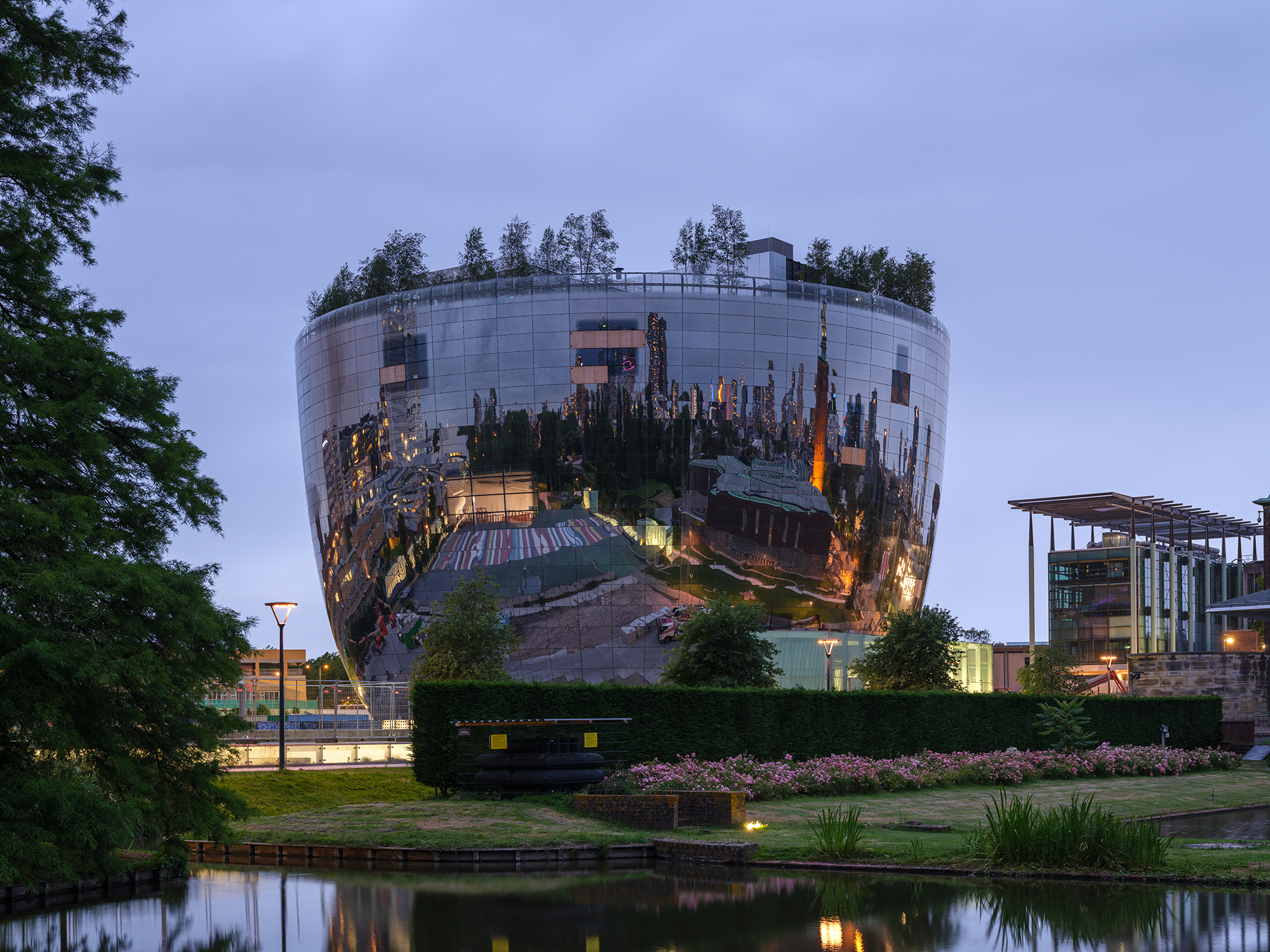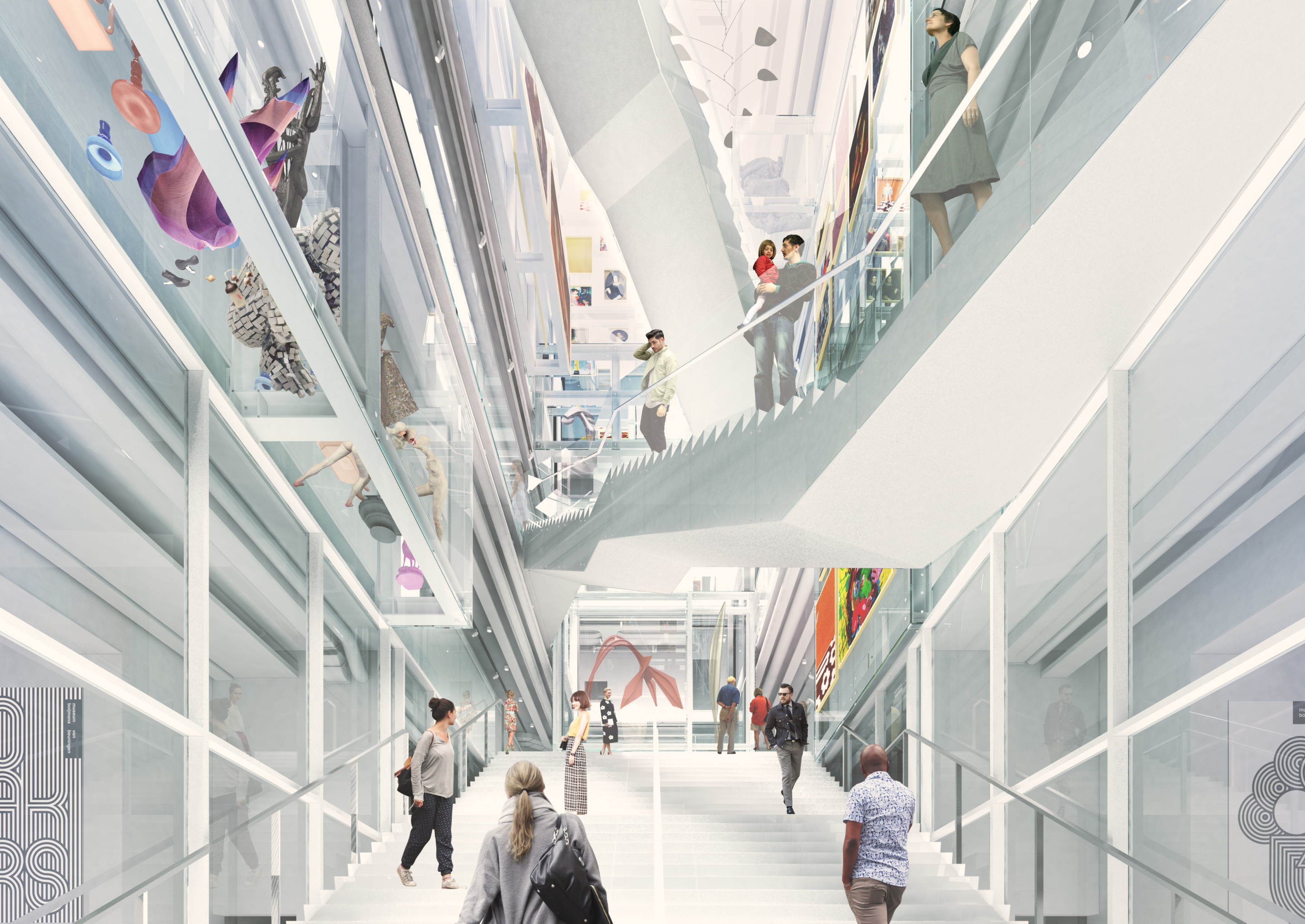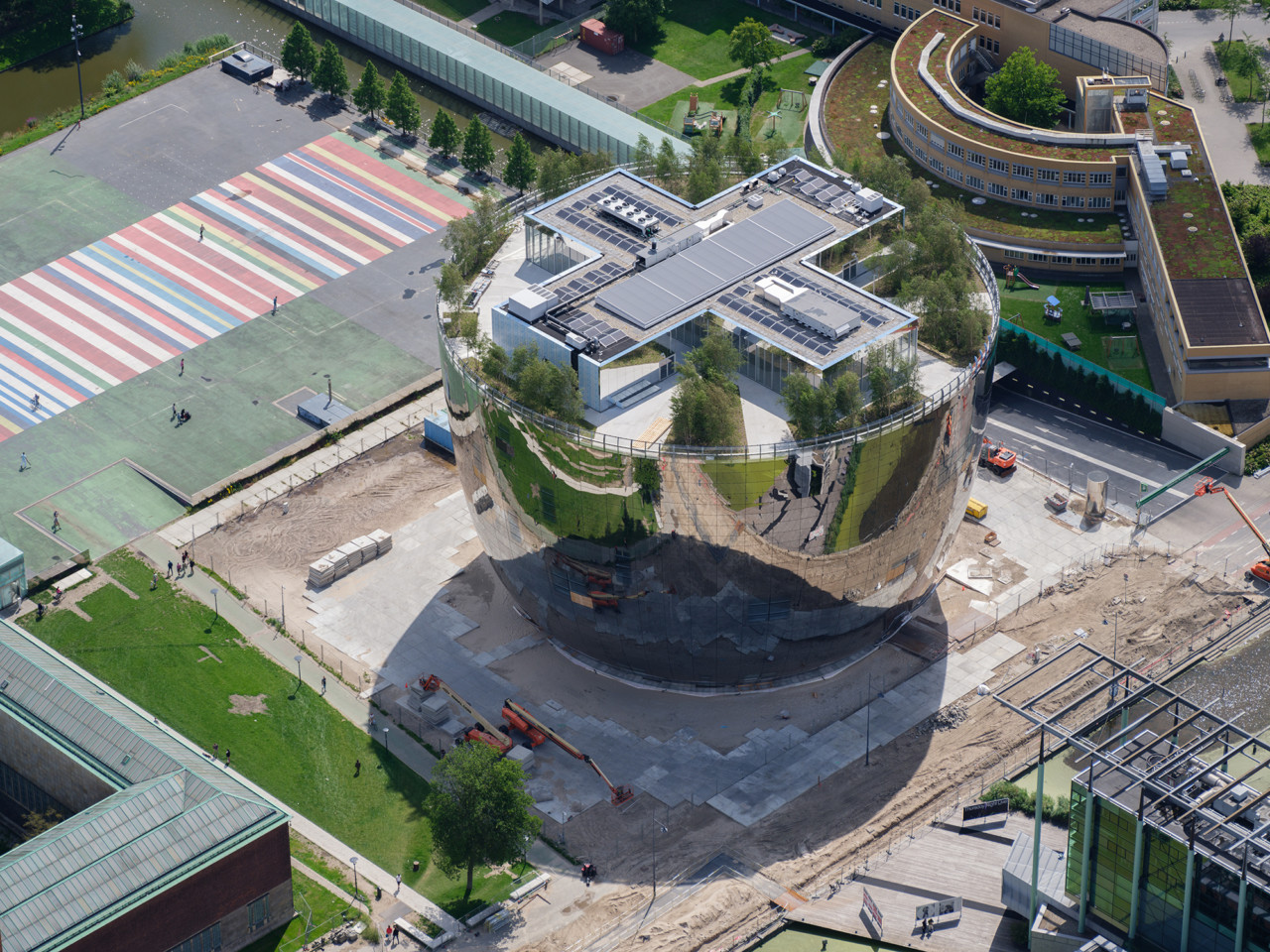Construction on Dutch firm MVRDV’s latest highly idiosyncratic hometown commission, Depot Boijmans Van Beuningen, has been completed on the grounds of OMA‘s Museumpark in Rotterdam. The bowl-shaped, mirrored structure crowned with a verdant rooftop terrace will serve as the new storage facility for Museum Boijmans Van Beuningen, a large art museum established in 1849 with a focus on the work of Dutch artists.
Over the next year, over 151,000 objects from the museum’s collection will be moved into the new facility; when the painstaking transition is complete, the building will open to the public as the first fully publicly-accessible art depot in the world. From September 25–27, however, Rotterdam residents will have a chance to tour the empty space before the epic relocation process begins.
“This is a working building in which the most important consideration is what the building can do: to look after our collection while still being open to the public,” said Sjarel Ex and Ina Klaassen, co-directors of Museum Boijmans Van Beuningen, in a statement. “Next year the entire collection of Boijmans Van Beuningen will once again be visible on one spot for the first time since 1935. We are convinced that making the collection accessible shows how much we care and how well we take care of it. This is something that the inhabitants of Rotterdam will be proud of; something that they want to see with their own eyes, because they partly own this enormous artistic treasure.”

Once open to the public, Depot Boijmans Van Beuningen will also feature a restaurant located within a birch tree-studded “rooftop forest” accessible via express elevator that will offer sweeping views of Rotterdam from 115 feet above Museumpark. Inside, the museum’s vast and highly diverse collection will be on full display throughout the facility, from the ground-floor lobby all the way up to the seventh-story rooftop restaurant.
As a press statement explains, the open nature of the depot’s exhibition rooms and curators’ studios will provide visitors with a “unique behind-the-scenes experience and the chance to learn how a world-renowned museum maintains and cares for its art collection.” As for the storage spaces that comprise a bulk of the 161,458-square-foot building, they will be divided into five different climate zones with the art itself being organized in accordance to its climatic requirements in lieu of movement or era. Visitors will be able to tour the depot independently or with a guide.
Despite the “daring design”—to quote MVRDV founding partner Winy Maas—of Depot Boijmans Van Beuningen, the energy-efficient building, clad in 1,664 mirrored panels, is intended to meld into its leafy setting with its lucent facade “wearing the trappings of whatever surrounds it.” Per the museum, the building’s reflective nature enables it to become “fully integrated into its surroundings” as it “enlivens its surroundings while establishing strong relationships with the park and the neighboring buildings.”

The museum itself is currently undergoing an extensive renovation and rehabilitation with select objects from its immense collection—“highly respected around the world and is unique within the Netherlands” per the museum—currently on loan to Dutch schools as well as other museums in the Netherlands and further afield. With the new storage facility now complete, these objects will begin returning back to Rotterdam for storage at Depot Boijmans Van Beuningen. With Delft-based Mecanoo serving as the renovation architect, the refreshed and refurbished museum is expected to reopen in 2026.
The museum’s “unsafe, overfull, and outdated” basement area had long-served as the depot for its collection although five different off-site storage facilities have been used in recent years as the integrity of the building began to come into question. When tasked with consolidating its collection from several different external locations to a single larger one, the museum opted for the publicly accessible, semi-curated hybrid option adjacent to the museum instead of the standard choice: a cavernous facility located in a secure and remote industrial park. As noted by Depot Boijmans Van Beuningen, most major art museums like itself only display six to ten percent of their collections in public galleries while the remaining 90 percent-plus of their holdings stay hidden away in storage.
With its design headed by MVRDV along with a long list of collaborators, Depot Boijmans Van Beunigen was realized as a joint effort between Museum Boijmans Van Beuningen, the Municipality of Rotterdam, and the De Verre Bergen foundation.


















